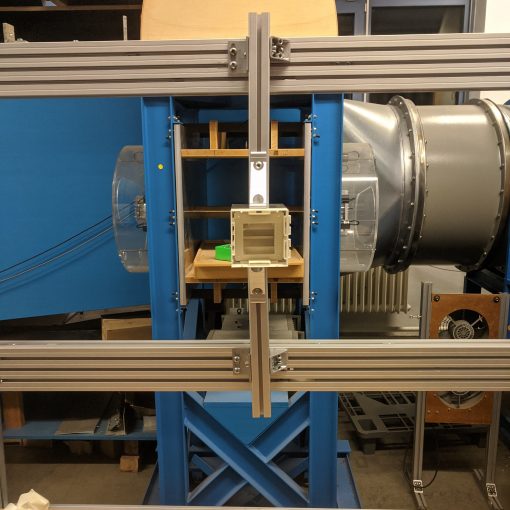 TUPEX-7 is a student experiment developed at TU Berlin and scheduled to fly on the 28th REXUS sounding rocket in March 2020 as part of the German-Swedish Rocket/Balloon Experiments for University Students (REXUS/BEXUS) program. The aim of TUPEX-7 is to develop miniaturized space technologies for a 1U CubeSat bus and demonstrate them in a milligravity environment.
TUPEX-7 is a student experiment developed at TU Berlin and scheduled to fly on the 28th REXUS sounding rocket in March 2020 as part of the German-Swedish Rocket/Balloon Experiments for University Students (REXUS/BEXUS) program. The aim of TUPEX-7 is to develop miniaturized space technologies for a 1U CubeSat bus and demonstrate them in a milligravity environment.
Research at TU Berlin has yielded design guidelines for so-called Highly-Integrated Side Panels (HISPs). HISPs contain elements from the electrical power system, communications system, and attitude determination and control system. A novel type of attitude control actuator known as picosatellite Fluid-Dynamic Actuators (pFDAs) is embedded on the HISP as an alternative to reaction wheels. Combining these elements, research shows an achievable payload-to-volume ratio of up to 60% in comparison to a 30% ratio currently typical of CubeSats. The primary objective of TUPEX-7 is to develop a low-cost HISP and test it in a near-space environment. In milligravity, the efficacy of the attitude determination and control techniques of the researched technology can be verified. The increase in payload volume can be employed by future experiments.
There is one secondary payload in TUPEX-7: a software-defined radio-based communications system. The communications system is itself a technology demonstration goal to prove a flexible radio transceiver suitable for use at a high altitude can be built at low-cost using commercial-off-the-shelf parts.
Behind TUPEX-7 is a team of engineering students, many of whom are participating in the Master of Space Engineering program at TU Berlin. The project is primarily developed within a series of courses over consecutive semesters. Guided by advisors, the students organize themselves to design and build the hardware and software, manage the project schedule and costs, and promote the project to the public.




